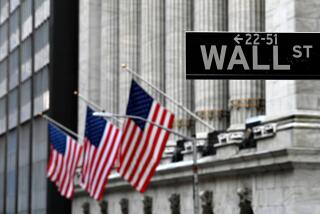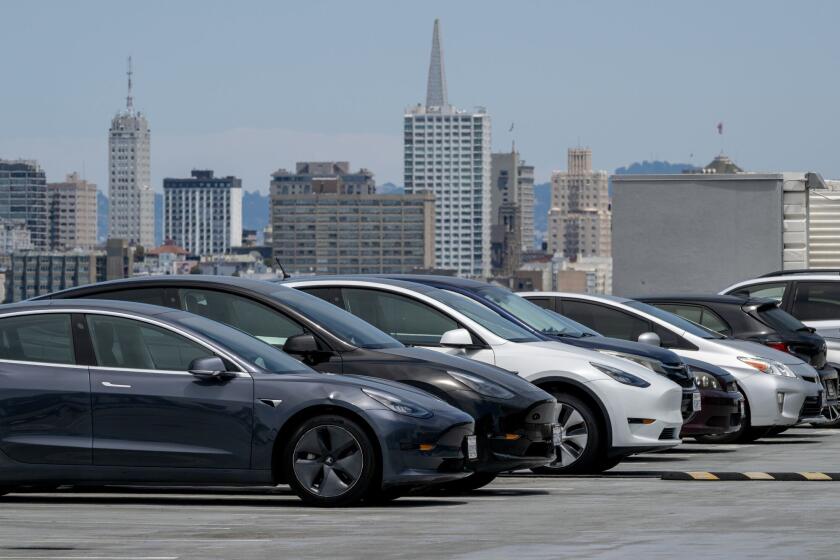INVESTMENT OUTLOOK : MANAGING THE NEW CHOICES : Going Global: Exploring Foreign Markets : Overseas Investing Can Be Risky and Rewarding
- Share via
When Philippine President Corazon Aquino toured the United States last month, her agenda included an unprecedented item for a visiting head of state: the launch of a mutual fund.
Like many other so-called country funds, the Philippine fund introduced by Aquino amid great fanfare on the New York Stock Exchange invests exclusively in Philippine firms, providing U.S. investors with a practical means of entering a risky but potentially very rewarding foreign market.
The very existence of such a fund--and the fact that it was received with tremendous enthusiasm--illustrates the extent to which U.S. investors have become conscious of the opportunities to be found in foreign stock exchanges. Over the past five years, overseas stock holdings have become a staple for many investors as foreign markets have expanded and become more accessible.
And while the foreign securities may no longer be the glamour play that they were earlier in the decade, they promise tremendous opportunities for the astute investor in the 1990s. As the much-touted globalization of finance continues, the big European and Asian markets will become even easier to play. Many developing countries will take further steps to open their markets to foreign investors and apply internationally acceptable trading practices, making the so-called emerging markets such as the Philippines less of a dice roll.
And overseas economic developments such as the unified European market in 1992, the move toward capitalism among formerly Communist states, and the tremendous economic growth among the newly industrialized Asian countries mean that foreign markets will be impossible to ignore.
Even today, overseas exchanges account for more than two-thirds of total worldwide market capitalization, prompting investment experts to say any reasonably diversified equities portfolio should include some foreign stocks.
“Both theoretical and empirical evidence demonstrate very strongly that you increase your return and reduce your risks by adding foreign securities to your holdings,” declares David R. Kenerson Jr., senior vice president at Van Eck Associates, a New York fund management firm.
But buying foreign stocks is trickier than it sounds, even though the logistics are simpler than they used to be. Experts who tout the opportunities overseas are quick to point out that the unwary amateur can easily get burned.
So when your long-lost cousin from the old country calls you with a stock that just can’t miss, consider the following:
* The biggest factor influencing your eventual return will almost certainly be the currency exchange rate, not the performance of an individual company.
* The smaller the exchange and the smaller the stock, the greater the difficulty in buying and selling. Some foreign securities (like some small domestic stocks) can be very thinly traded and, therefore, it can be very difficult to find buyers. And on European exchanges, the time between the trade and the final settlement of the transaction tends to be extremely long.
* In less-developed markets, the spreads on securities--the difference between the price offered by a seller and the price a buyer is willing to pay--are often in the 5% to 10% range, much higher than in many industrialized countries.
* Many foreign securities--and in some cases, entire exchanges--are effectively rigged by large domestic investors who can move prices at will.
* Few countries have information disclosure requirements anywhere near as stringent as those in the United States, so even the investor with time and expertise can have a hard time getting information about companies.
The risks and uncertainties, of course, vary dramatically from country to country, with well-developed markets such as London or Tokyo being far easier to deal with than obscure “emerging” markets in places such as Thailand or Greece.
But even “safe” markets have their hazards: “The exchange rate fluctuations alone are very hard to cope with,” notes Dan Calabria, president of Templeton Fund Management Inc. “You have to be extra careful about what you buy, and be ready to hold extra long.”
Many investment advisers recommend that individual investors who don’t have portfolios well into the six figures avoid direct investments in foreign stocks. Instead, smaller players should look either to mutual funds or to foreign shares that are traded on U.S. exchanges in the form of American Depository Receipts.
Mutual funds for foreign investing come in many flavors. Global funds invest in both domestic and international securities, while U.S.-based international funds invest in all markets except the United States.
Individual country funds have become increasingly popular among investors who want to bet on the economic prospects of a specific nation, and regional funds that invest only in, say, Pacific Rim or European countries have also grown rapidly.
Most country funds, as well as some of the global and international funds, are closed-end funds, meaning that a fixed number of shares trade on stock exchanges at prices that often reflect a premium over the underlying value of the shares in the fund portfolio. A piece of an open-end fund, on the other hand, will cost exactly what the securities are worth.
Closed-end country funds represent the only way to play certain high-risk, high-reward emerging markets, notably South Korea, Taiwan, and India, but the premiums can be quite substantial, sometimes as high as 100% above the underlying stock values. And if the general trend toward more open markets continues, such a play could backfire.
“There’s an argument for looking beyond” the status quo in promising but closed markets, observes Mark Sladkus, a vice president at Morgan Stanley. “Why pay a premium if the market is going to open up anyway?”
The other simple way to play foreign stocks is by way of American Depository Receipts, which are basically shares in foreign companies held in trust by U.S. investment houses. Many big-name foreign firms have ADRs, which do not protect investors from currency risks but can be bought and sold in dollars just like U.S. stocks.
The problem with ADRs is precisely that they are available only for the big, boring blue chips. ADRs in Siemens, Sony, or Telefonica represent a good way to diversify a portfolio, but they won’t make anyone rich in a hurry.
The same can’t be said for investments in a small, emerging market such as Malaysia, which Christian Wignel, chief investment officer for GT Capital Management in San Francisco, says represents a good example of the risks and rewards of emerging markets.
“It used to be a commodity-driven economy--an exporter of rubber, crude oil and tin--but now the manufacturing sector is growing rapidly. It’s coming to resemble the other economies of Asia, but labor costs are 50% lower, it has a very good infrastructure, and lots of open space,” Wignel notes.
Further, Malaysia boasts a long-established stock exchange, and corporate earnings are now growing rapidly along with the economy as a whole, Wignel adds.
Still, there are risks: Dilution of share prices by huge stock issues and manipulation by big local players can be a problem, Wignel says. And daily turnover can be quite low. “You have to take a long-term strategic view,” Wignel concludes.
The importance of being patient when investing in foreign securities overseas is basic, since quick hits represent little more than bets on short-term exchange rate fluctuations. And that’s especially true for those who would shrug off the experts and invest directly in foreign markets.
It can be done: Most major brokerage houses have foreign desks that can buy stocks for clients, though many won’t be bothered with small, odd-lot purchases or markets such as Italy that have serious settlement delays.
If you’re determined to try, be sure to gather as much information as possible about the characteristics of the market by consulting a source such as GT Capital’s Guide to World Equity Markets. There you’ll find minutia such as the number of brokerage firms on the Chilean exchange as well as substantive tips.
THINKING GLOBALLY
The charts on the right show the performance (in percentages) of selected established and emerging markets in the last decade.
The returns of emerging markets can vary wildly--both positively and negatively. Below, a sampling of the capitalizations of various markets. (Capitalization is the number of shares outstanding for companies traded on the markets times their share price.) MARKET SIZES In billions of U.S. dollars
through Country Sept. 30 Japan 3,915 U.S. 3,002 Britain 790 W. Germany 279 Australia 139 S. Korea 139 Spain 112 Hong Kong 75 Singapore/Malayasia 57 Thailand 18
Source: Morgan Stanley Capital International
More to Read
Inside the business of entertainment
The Wide Shot brings you news, analysis and insights on everything from streaming wars to production — and what it all means for the future.
You may occasionally receive promotional content from the Los Angeles Times.










